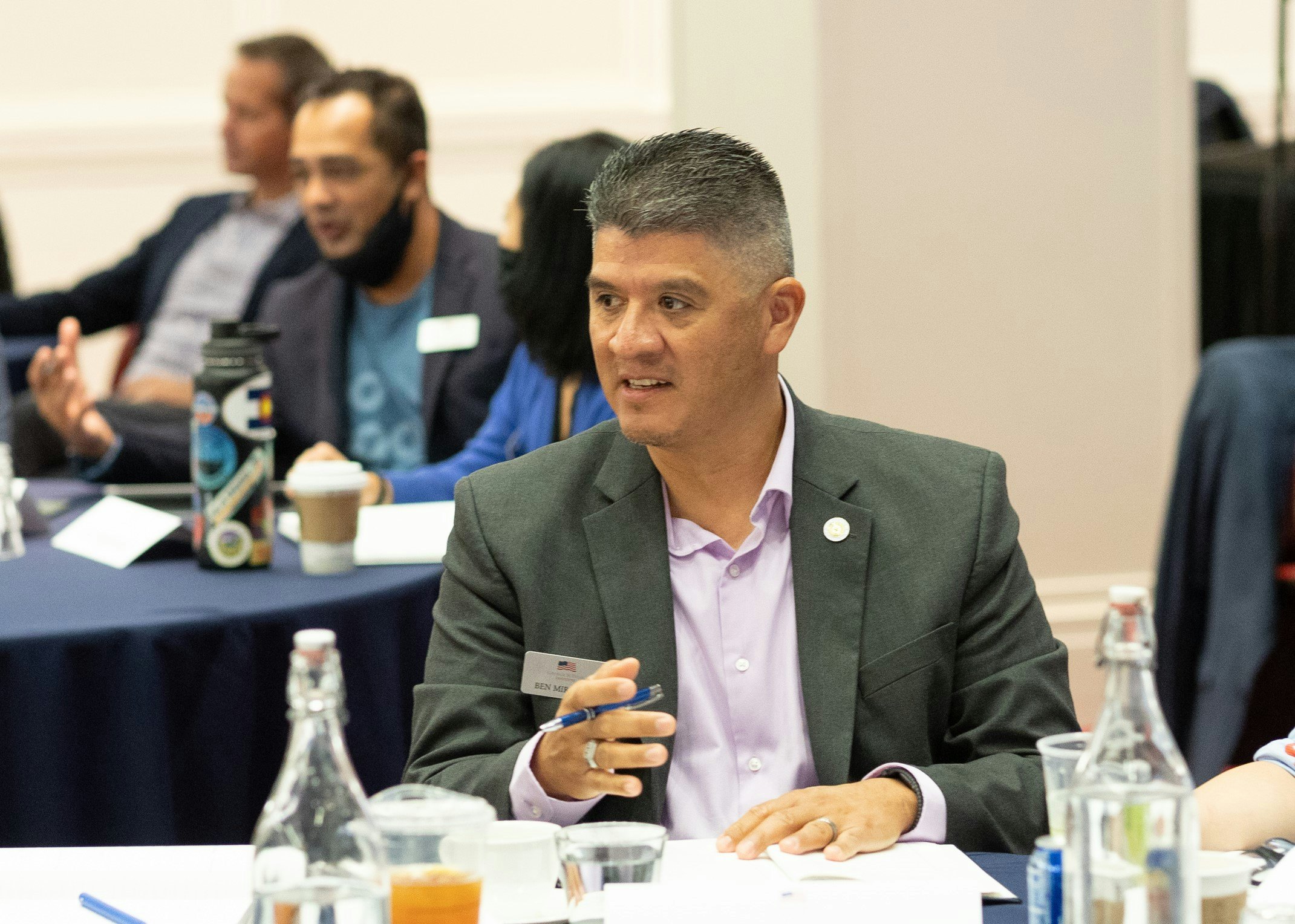David J. Smith, a post-9/11 veteran and a Team 43 Sports alumni, explains the importance of peer-to-peer networks
Photo: President Bush with David Smith at the Military Service Initiative Summit in 2014 (Grant Miller / George W. Bush Presidential Center)
In 2009, while having a beer at a local bar with a close friend who had just returned from Afghanistan, I met someone who would change my life forever. His name was Clay Hunt and, like me, he had recently separated from the military.
Clay and I quickly became close friends, largely because I didn’t know any other veterans in the area and he understood what I was going through with my transition. But one thing in particular set Clay apart. After multiple deployments, he had found that counseling and veteran service organizations were hugely helpful in his transition process.
Over time, Clay mentored me and guided me towards effective organizations that were able to provide proper care and resources to help me along my journey. If not for Clay, I’m not sure how I would have found the resources that led me to such a successful transition.
I point this out because the inability to easily locate resources, determine their effectiveness, and then connect with a person who can help them take action is one of the major obstacles veterans face in receiving care for their invisible wounds. The fact is, veterans should have access to and knowledge of peer-to-peer veteran networks that provide excellent care, knowledge, and resources. This would eliminate the struggle of trying to locate the resources, make contact with personnel, understand the organization’s mission, and request help… time after time.
The Bush Institute’s new Warrior Wellness Alliance offers a way to make those connections. The alliance streamlines the veterans’ ability to find and leverage high-quality trusted resources and it eliminates the stigma of seeking help.
Like me, many veterans can be reluctant to seek out services from mental health professionals. They fear that mental health professionals who lack military experience will be unable to understand or relate to their circumstances. Often, veterans reaching out to other veterans is the key to showing that it’s okay to ask for help.
The Warrior Wellness Alliance aims to overcome this reluctance by creating a network of leading veteran resources. The desired outcome is that when veterans join one of the alliance organizations, that organization will help provide additional referrals for care and resources through the alliance partners.
The alliance currently consists of a series of care providers as well as the nation’s leading veteran non-profits, such as Team Rubicon, Team Red White and Blue, and Student Veterans of America. By bringing in organizations from a diverse set of backgrounds (disaster response, fitness, education as listed in order above), transitioning veterans can seamlessly connect with the people and tools that will allow them to continue seeking purpose, development and personal growth.
By eliminating some of the obstacles and stigmas that veterans face when seeking help for invisible wounds, the Warrior Wellness Alliance effectively eases the burden and strain of transition. This makes the process easier for veterans, their families, and even the caregivers.
This alliance is only in its beginning stages. But, as it grows, we will be able to see the outcome of providing a series of connected and committed resources in one place at the most important moments of the veteran transition process.
It’s early to tell, but my belief is that by providing these resources directly to the veteran, we can eliminate much of the struggle and stigma that many of us have faced when taking off the uniform and re-entering civilian life. Rather than relying on single individuals to help us along the dark and winding path of transition, we can rely on entire networks of organizations, caregivers, and fellow veterans.
David Smith is a post-9/11 veteran and a Team 43 Sports alumni. He joined the Marine Corps in 2003 and served as an Infantry Rifleman and Team Leader with Alpha Company “Raiders” of the 1st Battalion, 4th Marine Regiment. He was deployed twice in support of Operation Iraqi Freedom.






























